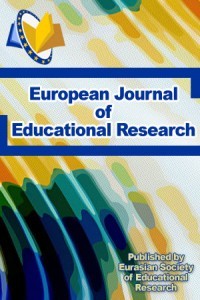Determination of Factors Effected Dietary Glycemic Index in Turkish University Students
Anahtar Kelimeler:
Glycemic index, diet, adolescent
Determination of Factors Effected Dietary Glycemic Index in Turkish University Students
We aimed to determine any factors like as smoking, being regular activity ect. effected on dietary glycemic index in university students. Methods: This study was carried out at Gazi University, Ankara, Turkey. The participants were 577 randomly selected Turkish healthy female university students aged 17-32 years. The survey included a questionnaire that assessed demographic, 3-day self-reported nutrient intake. The dietary intake was based on the of the recipients. The 3 days included 1 weekend day and the previous or next 2 days (Sunday, Monday, Tuesday or Thursday, Friday, Saturday). A weighted GI was designed to the diet of the participants with the use of values from the 2002 international table of GI values. BMI was calculated from measurements of height and weight. The differences between living area (house or dormitory)/ regular pysical activity (do or not)/smoking/nutrition education and mean dietary glycemic index was determined by Independent Sample t-Test. Results: Dietary glyemic index was found high (>70) in 98.4% of participants. Mean dietary glycemic index was found 85.1±6.80 and it was significantly (p<0.05) differences between participants staying house or dormitory, doing physical activity or not, smoking or not and educated on nutrition or not. Participant’s who are smoking, staying dormitory, sedanter and no educated about nutrition dietary glycemix index was found high than who are not smokin, staying house, doing regular physical activity and educated on nutrition. Conclusion and Implication: It’s important that educated students on health and nutrition to prevent their diets content high glycemic index. It can be help to prevent obesity in the future.
Keywords:
glycemic index, diet, adolescent,
___
- Ludwig DS. Dietary glycemic index and obesity. J. Nutr. 2000; 130:280S-283S.
- Wolever TMS. Relationship between dietary fiber content and composition in foods and the glycemic index. Am. J. Clin. Nutr. 1990;51:72-5.
- Ludwig D. Majzoub J.A, Al-Zahrani A, Dallal G.E, Blanco I. Roberts S.B. High glycemic index foods, overeating, and obesity. Pediatrics. 1999; 103(3):e26.
- Louis Sylvestre J. Le Megnan J.A fail in blood glucose level precedes meal onset in free feeding rats. Neurosci Biobehav Rev. 1993; 4:13-5.
- Smith FJ. Campfield LA. Meal initiation occurs after experimental induction of transient declines in blood glucose. Am. J. Physiol.1993; 265:R1423-9.
- Campfield LA. Smith FJ. Rosenbaum M. Hirsch J. Human eating evidence for a physiological basis using a modified paradigm. Neurosci Biobehave Rev. 1996; 20:133-7.
- Chapman IM. Goble E.A. Wittert G.A. Morley J.E. Horowitz M. Effect of intravenous glucose and euglycemic insulin infusions on short term appetite and food intake. Am. J. Physiol. 1998; 274: R596-603.
- Gielkens HA. Verkijik M. Lam WF. Lamers CB. Masclee AA. Effects of hyperglycemia and hyperinsulinemia on satiety in humans. Metabolism. 1998; 47:321-324.
- Roberts SB. High Glycemic Index Foods, Hunger, and Obesity: Is there a connection? Nutrition Reviews. 2000; 58(6): 163-169.
- Arslan, P. Pekcan G. Yurtta Kalan Yüksek Öğrenim Gençlerinin Beslenme Durumları ve Sorunları Diabet Yıllığı 4. Temel Matbaası İstanbul. 1985.
- Işıksoluğu M.Yüksek Öğrenim Gençliğinin Beslenme Sorunları. Fırat Havzasında Yükseköğretim 1987; 247-258.
- Sağlam F. Yürükçü S. Ankara Üniversitesi Eğitim Bilimleri Fakültesi Yüksek Okul Öğrencilerinin Besin Tüketim Durumu, Beslenme Alışkanlıkları ve Beslenme Bilgi Düzeylerinin Saptanması. Beslenme ve Diyet Derg. 1996; 25: 16-23.
- Foster-Powell K, Holt SHA, Brand-Miller JC. International table of glycemic index and glycemic index load values: 2002. Am. J. Clin. Nutr. 2002; 75:5-56.
- Pi-Sunyer FX. Glycemic index and disease. Am J Clin Nutr 2002;76:290S–8S. [PubMed: 12081854].
- Anding JD, Suminski RR, Boss L. Dietary intake, body mass index, exercise, and alcohol: are college women following the dietary guidelines for Americans. J Am Coll Health 2001; 49:167- 171.
- Çelik F, Toksöz P. Dicle Üniversitesi Beden Eğitimi ve Spor Bölümünde okuyan öğrencilerin besin tüketim düzeyleri ve beslenme alışkanlıkları. Beslenme ve Diyet Derg. 1999; 28:4-9.
- Fregapane G, Asensio-Garcia C. Dietary assessment of an educated young Spanish population using a self-administered mealbased food frequency questionnaire. Eur J Epidemiol 2000; 16:183-191.
- Hampl JS, Betts NM. Comparisons of dietary intake and sources of fat in low-and high-fat diets of 18-to24-year-olds. J Am Diet Assoc 1995; 95:893-897.
- Kimura N, Fukuwatari T, Sasaki R, Hayakawa F, Shibata K. Vitamin intake in Japanese women college students. J Nutr Sci Vitaminol 2003; 49:149-155.
- Mammas I, Bertsias G, Linardakis M, Moschandreas J, Kafatos A. Nutrient intake and food consumption among medical students in Greece assessed during a Clinical Nutrition Course. Int J Food Sci Nutr 2004; 55:17-26.
- Quiles JL, Manas M, Martinez MA, Ochoa JJ, Yago MD, Ramiez- Tortosa MC, Carazo E, Martinez-Victoria E. Dietary intake and anthropometric measures in a Spanish students group. Internat. J Vit Nutr Res 1996; 66:371-377.
- Soriano JM, Molto JC, Manes J. Dietary intake and food pattern among university students. Nutr Res 2000; 20:1249-1258.
- Garibağaoğlu M, Mergen Ö, Öner N. Fizik tedavi ve rehabilitasyon yüksekokulu öğrencilerinin ağırlık durumları ile beslenme alışkanlıklarının değerlendirilmesi, İstanbul Üniversitesi İstanbul Tıp Fakültesi Derg. 2005; 68 (3): 64-70.
- ISSN: 2165-8714
- Başlangıç: 2012
- Yayıncı: Eurasian Society of Educational Research
